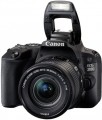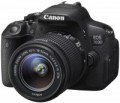Light sensitivity (ISO)
The sensitivity range of a digital camera matrix. In digital photography, light sensitivity is expressed in the same ISO units as in film photography; however, unlike film, the light sensitivity of the sensor in a digital camera can be changed, which gives you more options for adjusting shooting parameters. High maximum light sensitivity is important if you have to use a lens with a low aperture (see Aperture), as well as when shooting dimly lit scenes and fast-moving objects; in the latter case, high ISO allows you to use low shutter speeds, which minimizes image blur. However, note that with an increase in the value of the applied ISO, the level of noise in the resulting images also increases.
Frames per series (JPEG)
The highest number of shots a camera can capture “in one go” in JPEG continuous shooting.
The technical features of modern digital cameras are such that during continuous shooting, photos have to be recorded in a special buffer, and only then, after the end of the series, they can be copied to a memory card. This buffer has a limited size, so the number of frames in one series is also limited. At the same time, we note that this indicator is usually indicated for shooting at the highest possible resolution (see "Maximum image size"); at lower resolutions, the volume of each image is reduced, and the number of frames in the series may turn out to be more than stated in the specifications.
JPEG, the most popular digital photography format today, is smaller and requires less processing power than RAW (see "Recording in RAW Format"). Therefore, in a JPEG series, as a rule, more frames are available to the photographer. However, in some models that have two separate buffers (for RAW and JPEG), it may be the other way around.
Frames per series (RAW)
The highest number of shots the camera can capture “in one shot” when shooting in RAW format continuously (see “Recording in RAW Format”).
The technical features of modern digital cameras are such that during continuous shooting, photos have to be recorded in a special buffer, and only then, after the end of the series, they can be transferred to a memory card. This buffer has a limited size, so the number of frames in one series is also limited. At the same time, we note that this indicator is usually indicated for shooting at the highest possible resolution (see "Maximum image size"); at lower resolutions, the volume of each image is reduced, and the number of frames in the series may be more than stated in the specifications.
RAW images take up more space and require more processing power than "finished" JPEGs. Therefore, the number of frames in a series of this format is usually lower than that of JPEG. However, there are exceptions — usually these are cameras that have two separate buffers (for RAW and JPEG).
Video scene modes
The number and / or types of scene programs for shooting videos provided in the design of the camera.
Scene programs are a set of presets designed for different shooting situations - for example, in sunlight, on a cloudy day, in a darkened room, etc. Also, this list may include other specific modes - for example, creative tools. In any case, the presence of scene programs facilitates the choice of video shooting parameters, which is very useful for novice users.
File recording formats
File formats in which the camera can record video. Given that the footage is designed to be viewed on an external screen, you should make sure that the playback device (DVD player, media centre, etc.) is able to work with the appropriate formats. At the same time, many camera models themselves can play the role of a player by connecting to a TV via an audio / video output or HDMI (see the corresponding paragraphs of the glossary). And if the video materials are to be viewed on a computer, you should not pay special attention to this parameter at all: problems with format incompatibility in such cases rarely occur, but are usually solved by installing the appropriate codec.
Maximum video length
Restrictions on the length of the recorded video provided in the design of the camera. In some models, the recording time is limited in time (for example, 30 minutes) — thus, to record a longer video, it will have to be split into separate clips. In others, the duration depends only on the amount of free memory — you can record as long as there is enough space. There is also a combination of these options; in such models, video recording stops as soon as either of the two limits is reached.
Connection ports
— USB C. A universal USB interface that uses a Type C connector. USB ports themselves (all types) are used mainly for connecting the camera to a computer for copying footage, managing settings, updating firmware, etc. Specifically The Type C connector is comparable in size to earlier miniUSB and microUSB, but has a reversible design that allows the plug to be inserted in either direction. In addition, USB C often operates according to the USB 3.1 standard, which allows for connection speeds of up to 10 Gbps - a useful feature when copying large amounts of content.
-
HDMI. A comprehensive digital interface that allows you to transmit video (including high resolution) and audio (up to multi-channel) over a single cable. The presence of such a port makes it possible to use the camera as a player: it can be directly connected to a TV, monitor, projector, etc. and view your footage on the big screen. In this case, broadcast capabilities can include not only video playback, but also demonstration of captured photos in slide show mode. HDMI inputs are present in most modern video equipment, and connection is usually not a problem.
Nowadays, there are several versions of the HDMI interface on the market:
- v 1.4. The oldest version currently relevant, released in 2009. However, it supports 3D video, is capable of working with resolutions up to 4096x2160 at a speed of 24 fps, and in Full HD resolution the frame rate can reach 120...fps. In addition to the original v.1.4, there are also improved modifications - v.1.4a and v.1.4b; they are similar in basic capabilities, in both cases the improvements affected mainly work with 3D content.
- v2.0. Significant HDMI update introduced in 2013. In this version, the maximum frame rate in 4K has increased to 60 fps, and support for ultra-wide 21:9 format can also be mentioned. In update v.2.0a, HDR support was added to the interface capabilities; in v.2.0b this function was improved and expanded.
- v 2.1. Despite the similarity in name to v.2.0, this version, released in 2017, was a very large-scale update. In particular, it added support for 8K and even 10 K at speeds up to 120 fps, and also further expanded the capabilities for working with HDR. This version was released with its own cable - HDMI Ultra High Speed; all features of v.2.1 are available only when using cables of this standard, although basic functions can be used with simpler cords.
— Headphone output. Audio output allows you to connect headphones to the camera. As a rule, it is represented by a classic 3.5 mm mini-jack. The presence of such a connector provides the ability to monitor sound during video recording in real time. This is especially important when filming interviews, vlogs and other similar projects.
— Microphone input. Specialized input for connecting an external microphone to the camera. External microphones are significantly superior to built-in microphones in sound quality. Firstly, they are not so sensitive to the camera’s “own” sounds - from buttons, control wheels, focus motors, etc. (and if the microphone uses a long wire and is not attached to the body, these sounds will not be heard at all). Secondly, external microphones themselves have more advanced characteristics. On the other hand, their use is justified mainly for professional video recording; therefore, the presence of a microphone input, as a rule, corresponds to advanced video recording capabilities
Autofocus modes
Autofocus operating modes provided in the camera design.
— One picture. The main mode of autofocus operation is found in all modern cameras and is used most often. Designed for shooting motionless objects.
— Follower. This mode is used for shooting moving objects, the distance to which is constantly changing: the camera constantly monitors the position of the object, constantly adjusting the optics so that it is in focus. Usually found in middle and upper class cells.
— AI focus. A peculiar combination of the previous two modes is used when a stationary object can start moving at any moment. If the scene is static, autofocus works in the single frame mode, but if the object on which focus is made starts to move, the device switches to tracking autofocus mode. AI mode allows you to almost instantly set the optimal autofocus settings, which is especially useful for sequential shooting. Initially, it was found in expensive models, however, thanks to the development of technology, today it can even be used in inexpensive compacts (see “Camera type”).
— By the face. Autofocus mode that uses a face recognition system and focuses on them. This feature is especially useful for taking pictures of people at a great distance from the camera, when the face is much smaller than the frame size, such as in group shots.
— With a smile. A further development of the face autofocus mode described above, when, in accordance with the nam...e, the system reacts not just to a face, but to a smile. This mode can be combined with the function of automatic shooting at the moment of a smile.
— Animal in the frame. A mode designed primarily for shooting animals, which can be difficult (and often impossible) to make them sit still in the frame. It is usually a variation of the tracking autofocus described above, but specific features of operation may vary depending on the camera model.
This list is not exhaustive, and other specific autofocus modes may be provided in the design of modern cameras.
Focus points
The number of focus points (autofocus) provided in the design of the camera.
The focus point is the point (more precisely, a small area) in the frame from which the autofocus system reads data for focusing. The simplest systems work with a single point, but their capabilities are very limited, and this option is practically not found today. Modern digital cameras have at least three focus sensors, and in the most advanced models this figure can reach several dozen.
The more autofocus sensors there are in the camera, the more advanced its autofocus capabilities will be, the more specific techniques it allows you to use. In this case, the selection of specific points used can be carried out both automatically, simultaneously with the choice of the subject program, and manually (however, the second option is more typical for professional cameras). In addition, the abundance of focus points has a positive effect on the quality of the tracking autofocus (see "Autofocus Modes").
In general, more focus sensors are generally considered a sign of a more advanced camera; however, differences in quality become really noticeable only if the difference in the number of points is significant - for example, if we compare models with 9 and 39 points. A lot also depends on the location of the points in the frame - it is believed that sensors distributed over a wide area work better than densely located in the center of the frame, even if their number is the same.

